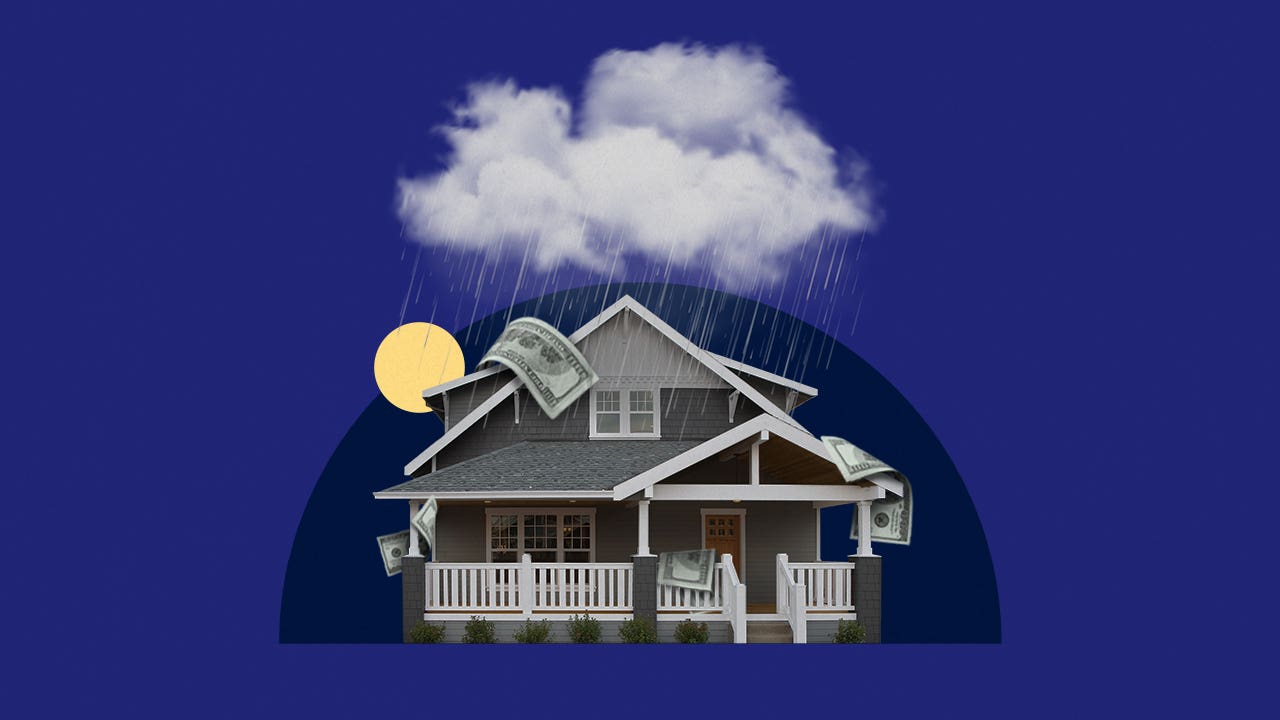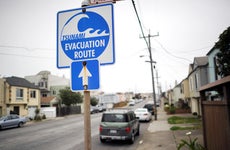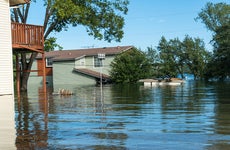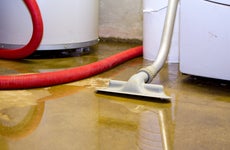April showers bring more than May flowers: Does homeowners insurance cover rain damage?

The Bankrate promise
At Bankrate, we strive to help you make smarter financial decisions. To help readers understand how insurance affects their finances, we have licensed insurance professionals on staff who have spent a combined 47 years in the auto, home and life insurance industries. While we adhere to strict , this post may contain references to products from our partners. Here's an explanation of . Our content is backed by Coverage.com, LLC, a licensed entity (NPN: 19966249). For more information, please see our .
With spring comes warmer weather, more sunlight and spring rain — all great things if you’re a flower, but not necessarily if you’re a homeowner. Heavy rainfall can do extensive damage to your home, especially if that rain triggers a flood. The Federal Emergency Management Agency (FEMA) reports that a single inch of floodwater can do up to $25,000 of damage — damage which won’t be covered unless you have a separate flood insurance policy.
Rain damage goes beyond just floods. While home insurance can cover sudden and accidental water damage, rain damage may not be covered in all cases. Here’s what you need to know about home insurance for rain to keep your home safe and dry as April showers begin.
Is your home ready for spring rain?
Not every state is hit equally by spring rain. The National Oceanic and Atmospheric Administration (NOAA) predicts above-average rainfall for Spring 2024 in the Central Plains, the Southeast and Southern Alaska, while the Pacific Northwest and Southwest are predicted to experience below-average rainfall. Although it could be a mild year for spring floods for much of the country, the Midwest and South have a greater than 50 percent chance of experiencing a moderate flood. In total, around 133 million people are at risk for floods this spring season.
Extreme weather linked to climate change is partially to blame for the unusual weather patterns. In the NOAA’s Spring Outlook newsletter, Administrator Rick Sprinrad, Ph.D., stated: “Climate change is affecting the timing, intensity and duration of weather events in the United States.” Despite lower precipitation numbers predicted for some of the country, the NOAA still projects above-average rainfall for the country as a whole.
Rainy weather can affect more than just your outdoor plans. In fact, Bankrate’s data shows that it can actually have an impact on your budget. Our survey on the financial impact of severe weather found that 20 percent of Americans have incurred home or property damage costs due to an extreme weather event over the past decade.
Does homeowners insurance cover rain damage?
In some cases, your home insurance does cover water damage from rain; it mostly depends on how the rain entered your home. Let’s say that a storm knocks a tree branch through your window, and your furniture and flooring are damaged by rain intrusion. Your home insurance policy would likely cover that damage, as the rain came into your home via a covered peril (a falling object). In a standard home insurance policy, rain damage might be covered if it gets into the home one of these ways:
- Burglary or vandalism: If a burglar breaks into your home and rain gets in through a broken door or window, the rain damage could be covered by your policy.
- Weight of snow, ice or sleet: Ice and snow buildup could lead to a roof collapse, which could let water into your home. An HO-3 policy would likely cover the damage to your roof and your personal belongings.
- Wind: High winds could break windows and let rain in. Wind is a covered peril in many home insurance policies.
- Falling objects: Tree branches and other falling objects can break windows and walls, which can let rain into your home. Storm damage would likely be covered by your policy in that case.
Rain damage is not covered by home insurance in every instance. Home insurance does offer some financial protection against water damage, but it must be sudden and accidental. Regular wear and tear is not covered. These perils are also excluded from standard home policies:
- Neglect: If you left your skylight or window open during a storm, your home insurance policy will not likely cover the resulting rain damage.
- Poor maintenance: If the rain damage is caused by a poorly maintained roof, it will likely not be covered.
- Gradual damage: If a homeowner is aware of rain damage but ignores it for too long, an insurer will likely deny the claim.
- Flooding: Flood is specifically excluded from most home insurance policies.
- Mold: Mold is typically excluded from home policies, but if the mold is the result of a covered peril, you might have coverage. But we recommend you check with your insurance company for specifics.
Endorsements for rain damage
There are several add-on coverage types available to homeowners to make their policies more rain-ready:
- Flood insurance: Flood damage is excluded from most home insurance policies, but homeowners may be able to purchase a flood policy through the National Flood Insurance Program or through a private provider.
- Scheduled property coverage: This endorsement provides higher coverage limits for valuable items. If you have high-value items susceptible to water damage, like art or furniture, this could be worthwhile.
- Sewer backup coverage: During heavy rainfall, a sump pump could fail. This coverage endorsement can help to pay for the damage caused by sump pump failure.
How to protect your home from rain damage
Even if your home insurance policy covers some rain damage, filing a claim can still be costly. Bankrate’s emergency savings report found that 56 percent of adults would not pay an emergency expense of $1,000 or more from their savings accounts. As many home insurance deductibles hover around the $1,000 mark, the cost of a claim could cause financial stress this spring season.
While spring rain can be unpredictable, rain damage is preventable in many instances. The Insurance Information Institute (Triple-I) lists a myriad of ways homeowners can make their homes more resilient to rain:
- Seal your windows: Caulking your windows can be an easy and cheap DIY project to keep rainwater from getting in through your windows.
- Get your roof and downspouts inspected: For roof leaks, prevention is the best cure. Getting a professional to look at your roof and gutters can help stop leaks before they start.
- Keep stored belongings in waterproof bins: This is especially helpful for irreplaceable items like old photographs and government documents. If you store valuables in your basement, it also helps to keep them off the floor in case of water seepage.
- Maintain a home inventory: If you end up needing to file a claim for rain damage, having an up-to-date home inventory may help expedite the process.
Remember, home insurance is not designed to financially protect against homeowner neglect or general wear and tear. Even if your home insurance policy does cover some rain damage, the claim process can be costly and lengthy. Evaluating your home and taking precautions to avoid damage can help you enjoy those May flowers without worrying about water damage.
Related Articles



